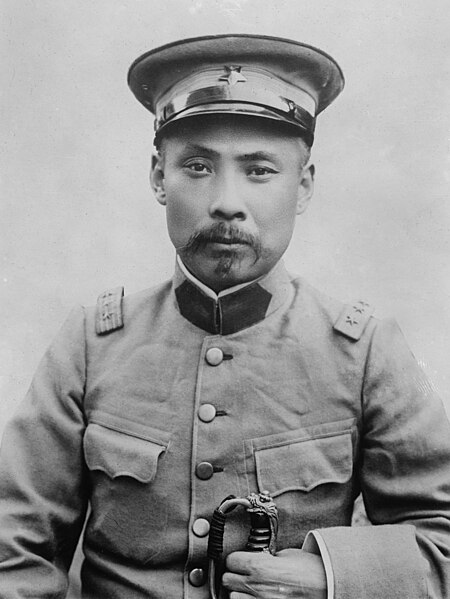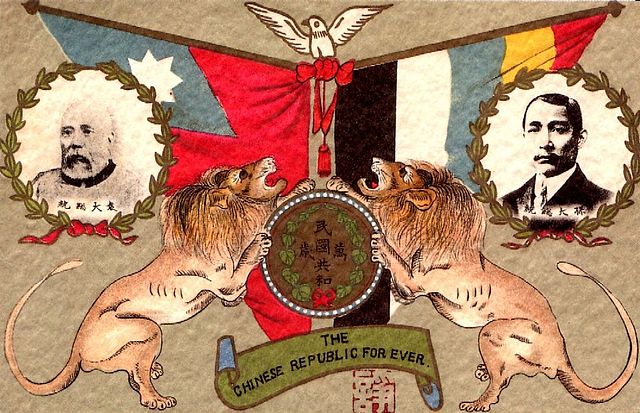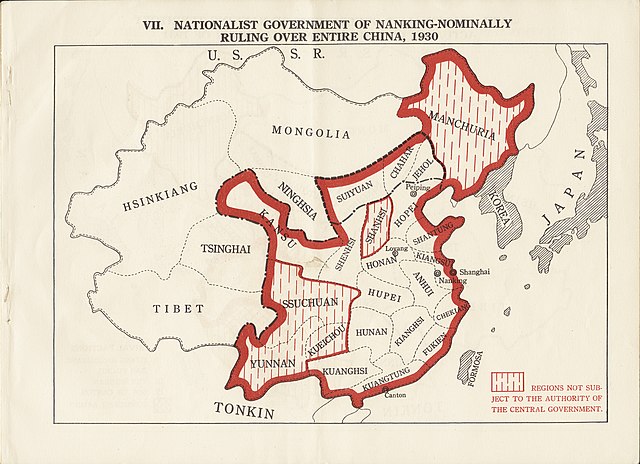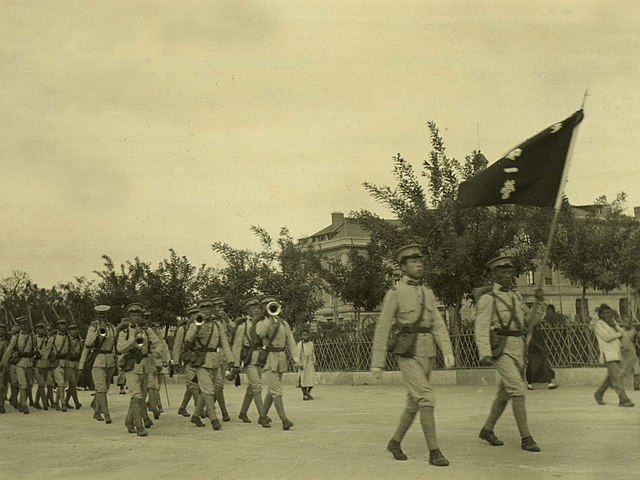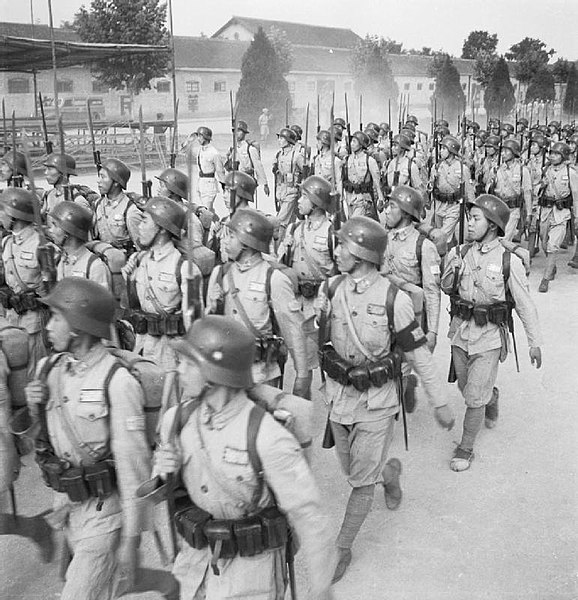The Beiyang government was the internationally recognized government of the Republic of China between 1912 and 1928, based in Beijing. It was dominated by the generals of the Beiyang Army, giving it its name.
The first Congress of the Republic of China in 1915
Yuan Shikai's inauguration as the provisional president.
The Yuan Shikai "dollar" (yuan in Chinese), issued for the first time in 1914, became a dominant coin type of the Republic of China.
Duan Qirui, Chief Executive of the Republic of China
Republic of China (1912–1949)
The Republic of China (ROC), or simply China, was a sovereign state based on mainland China from 1912 to 1949 prior to the government's relocation to Taiwan, where it continues to be based today. The ROC was established on 1 January 1912 during the Xinhai Revolution against the Qing dynasty, ending the imperial history of China. The Republican government was ruled by the Kuomintang (KMT) as a one-party state based in Nanjing from 1927, until its flight to Taipei on 7 December 1949 following the KMT's de facto defeat by the Chinese Communist Party (CCP) in the Chinese Civil War. The CCP proclaimed the People's Republic of China on 1 October 1949, while the ROC retains control over the "Free Area", with the political status of Taiwan remaining in dispute to this day.
Yuan Shikai (left) and Sun Yat-sen (right) with flags representing the early republic
Nationalist government of Nanjing, which nominally ruled over all of China during 1930s
Beiyang Army troops in the 1920s.
NRA troops in 1944.




